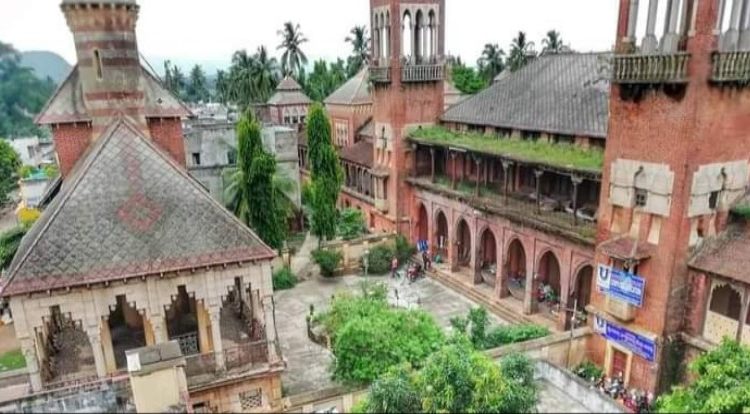Crumbling Gajapati Palace In Odisha In Urgent Need Of Renovation

Berhampur: The historical Gajapati Palace at Paralakhemundi, the district headquarters of Odisha’s Gajapati district, which is crumbling for lack of maintenance, needs urgent steps of renovation to preserve it as a heritage site.
The palace, built 188 years ago, now stands with broken tombs, cracked roof and walls, damaged doors and windows and a thick layer of dust on the floor.
Many organisations including Utkal Utkal Hiteisini Samaj, which had played an important role in the formation of a separate Odisha province, Utkal Sammilani, Apanna Parichha Smruti Sansad, Bhakti Sangeet Sansad have expressed their anguish over indifferent attitude of the state government in preservation and renovation of the historic palace and declaring it as a state monument.
“The structure is in a decaying process and any delay would turn the palace into rubble and a great chapter of the history will be ruined,” said Bishnu Mohan Adhikari, a young researcher on Paralakhemundi.
The palace was designed and constructed by the British engineer-cum-architect Seasol during the time of Maharaja Prataprudra Narayan Dev II who was the grandfather of Krushna Chandra Gajapati Narayan Dev. Its construction was started on May 24, 1835 with an amount of Rs 4.5 lakh and completed in 7 years.
The palace has over 100 rooms with specially designed and wire cut glazed bricks and white lime water. It has a Central Hall or the Durbar Hall behind which is the Kalyan Mandap and the two palace deities of the Maharaja. It is air-conditioned in its own ways with 36-inch walls which keep the palace cool in the summer and warm in the winter. There is also no threat from lightning because of the mechanical arrangements that are being made to defuse it.
Though the outer design appears to be marbles, black granites were used in the construction. Workmen engaged in construction of the palace were mostly from Ganjam and Puri districts. The materials including stones used for the palace were mined from local sources like Malati Hills or Boya Konda and the other side of Mahendratanaya River.
The palace, where the movement for a separate Odisha state was started, is also reminiscent of patronisation of art, culture and literature. It witnessed the activities of the late Maharaja Krushna Chandra Gajapati Narayan Deb from his childhood. He was one of the main architects of modern Odisha and the first Premier of the state from April 1 to July 18, 1937 and again from November 24, 1941 to June 30, 1944.
Among many litterateurs, 18th century Odissi musician, poet and composer Kabikalahansa Gopal Krushna Patnaik, who has penned about 90 percent of the traditional Odissi songs and chhanda in Odisha, frequently visited the palace. Another eminent Odissi poet Kabisurya Baladev Rath was the home tutor of Gajapati Jagannath Narayan Deb III, the son of Gajapati Purushottam Narayan Deb and spent 5 years in this historic palace.
The century-old mural paintings in the palace inspired many artists and historians, said eminent Indian painter of Odisha and former secretary of Lalit Kala Academy in New Delhi and Bhubaneswar Dr Dinanath Pathi. The palace also witnessed patronisation of many folk dance forms including ‘Bhutakeli’, ‘Rajanata’ and others, said Adhikari

Comments are closed.